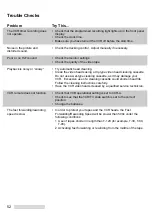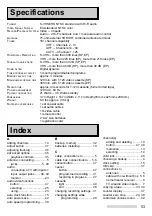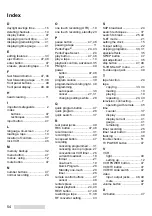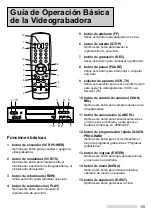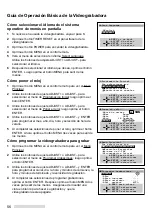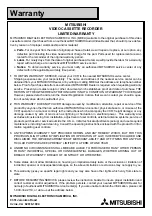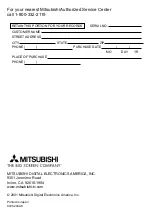
50
Important Information
Special Information Concerning Stationary Images or Letterbox Images:
For best performance and longest life, the normal use of a TV should include a mixture of TV picture types.
The most frequently used picture types should fill the screen with constantly moving images rather than
stationary images or patterns. Displaying the same stationary patterns over extended periods of time, or
displaying the same stationary patterns frequently, can cause uneven aging of the TV picture tubes and
leave a subtle, but permanent, ghost image. Most TV warranties do not cover this type of damage to the
picture tubes. To avoid this, mix your viewing pattern. Do not show the same stationary image for more
than 15% of your total TV viewing in any one week. Display constantly moving and changing images that
fill the screen whenever possible. We also recommend that you reduce the contrast setting of your TV
when you watch that type of image. When possible, you may wish to use your television’s PIP, POP,
ZOOM, EXPAND or other picture shape controls so that the moving images fill the screen.
Please check your TV’s owner’s guide for other recommendations.
Examples of stationary images include:
•
Letterbox top/bottom bars.
These are solid colored bars that when showing a widescreen (16:9)
image on a standard (4:3) TV.
•
Side panels.
These are the solid colored side bars when showing standard shaped (4:3) TV images on
a widescreen (16:9) TV.
•
Stock-market report bars.
These include the ticker bar constantly running at the bottom of the TV
screen on financial news channels.
•
Shopping channel logos & pricing displays.
These include bright graphics that are shown constantly
or repeatedly in the same location.
•
Video game patterns and scoreboards.
•
Bright station logos.
Moving or low-contrast graphics are less likely to cause uneven aging of the
picture tubes.
•
On-line (internet) web sites.
In addition, any other stationary of repetitive computer style images from
any source may cause uneven aging of the picture tubes.

















